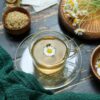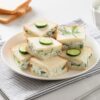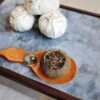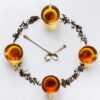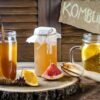
If there’s one beverage that’s stirred up a storm in the world of tea, it’s boba tea. Also known as bubble tea, pearl milk tea, tapioca tea, or simply ‘boba,’ it’s a drink that’s taken the world by storm. Originating from Taiwan, boba tea is a unique blend of traditional tea, milk, sugar, and chewy tapioca balls. The unique texture and taste have made it a popular choice among tea enthusiasts and newbies alike.
Boba tea is a versatile beverage, available in countless flavors and styles. From classic milk tea to fruity iced versions, there’s a boba tea for every palette. The craze for this beverage isn’t just limited to its homeland. From Asia to America, from Europe to Australia, boba tea shops have sprung up in every corner of the globe, serving this delightful drink to an ever-growing fan base.
So what is it about boba tea that makes it so irresistible? Is it the chewy pearls that add a fun twist to the drink? Or the myriad of flavors that cater to everyone’s taste? Or is it the cultural significance that it holds? This article will explore all these aspects and more, revealing the secrets behind the global phenomenon that is boba tea.
The History of Boba Tea
The origins of boba tea trace back to Taiwan in the 1980s. It was during this time that Taiwan was experiencing a tea renaissance. Tea shops were becoming increasingly popular, and vendors were always on the lookout for innovative ways to attract customers. It was in this environment that boba tea was born.
There are different stories about who exactly invented boba tea, but most agree that it was either Lin Hsiu Hui, the product development manager at Chun Shui Tang tea shop, or Liu Han-Chieh, the owner of Hanlin Tea Room. Regardless of who was the true inventor, the creation of boba tea marked a significant turning point in the history of tea.
Boba tea quickly became a sensation in Taiwan. The unique blend of traditional tea with sweet, chewy pearls was unlike anything people had tasted before. The drink was not only delicious but also fun to consume. This combination of taste and experience catapulted boba tea to the top of the beverage charts.
The Rise of Boba Tea in the Global Market
Boba tea’s popularity didn’t stay confined to Taiwan. The drink soon spread to other parts of Asia, and by the 1990s, it had reached the shores of the United States. Large immigrant communities, especially in cities like Los Angeles, San Francisco, and New York, were instrumental in introducing boba tea to the American market.
The global spread of boba tea didn’t stop there. Europe, Australia, and even Africa have seen a rise in the number of boba tea shops in recent years. This global expansion has been fueled by a combination of factors. The unique taste of the beverage, the interactive experience of drinking it, and the Instagram-worthy aesthetics have all contributed to its worldwide appeal.
Yet, the rise of boba tea in the global market is not just about the beverage itself. It’s also about the culture that it represents. Boba tea has become a symbol of modern Asian culture, reflecting its innovative spirit and youthfulness.
What Makes Boba Tea Special?
There are many factors that set boba tea apart from other beverages. First and foremost, it’s the unique combination of ingredients that makes it so special. Traditional tea serves as the base, providing a calming, aromatic backdrop. The milk adds a creamy richness, while the sugar lends a sweet balance.
But it’s the tapioca pearls that truly steal the show. These chewy balls, also known as ‘boba,’ give the drink its distinctive texture. The experience of slurping the tea along with the boba creates a fun, interactive drinking experience. The pearls also add an extra layer of sweetness, making the drink even more indulgent.
Another factor that makes boba tea special is its versatility. The beverage can be customized in numerous ways, from the type of tea used (green, black, oolong, etc.) to the sweetness level to the choice of toppings. This means that there’s a boba tea for every taste and preference.
The Ingredients of Boba Tea
The main ingredients of boba tea are tea, milk, sugar, and tapioca pearls. However, the type and quality of these ingredients can vary greatly, affecting the final taste of the drink.
The tea used in boba tea can be black, green, oolong, or even fruit-infused. Each type of tea brings its unique flavor profile to the drink. The milk can be dairy, non-dairy, or even omitted altogether in some variations. The sweetness level can also be adjusted to personal preference.
The star of the show, the tapioca pearls, are made from tapioca starch, derived from the cassava root. These pearls are boiled until they become soft and chewy, then sweetened with sugar syrup. The result is a sweet, gummy ball that adds a fun twist to the drink.
The Process of Making Boba Tea
Making boba tea involves several steps. First, the tea is brewed. Depending on the type of tea used, the brewing time can vary. Once the tea is ready, it’s usually chilled. Some variations of boba tea, however, are served hot.
While the tea is chilling, the tapioca pearls are prepared. They are boiled in water until they reach the desired level of chewiness. Once cooked, they are soaked in a sugar syrup to sweeten them.
The final step is assembling the drink. The pearls are added to a glass, followed by the chilled tea, milk, and any additional flavorings or sweeteners. The drink is then shaken to mix all the ingredients together. The result is a delicious, fun-to-drink beverage.
Different Types of Boba Tea and Their Flavors
Boba tea is incredibly versatile, with countless variations to suit every taste. The classic version is made with black tea, milk, sugar, and tapioca pearls. However, there are many other types to explore.
Fruit-flavored boba teas are popular, especially in the warmer months. These are typically made with a fruit-infused tea base and often include fresh fruit pieces. Common flavors include mango, strawberry, and lychee.
For those who prefer a creamier drink, there’s milk tea boba. This version is made with a higher ratio of milk to tea, resulting in a richer, creamier beverage. Flavors like taro and matcha are particularly popular in milk tea boba.
The Health Benefits and Concerns of Boba Tea
Like any other beverage, boba tea comes with its own set of health benefits and concerns. On the positive side, the tea base provides antioxidants, which are beneficial for heart health and may reduce the risk of certain types of cancer.
However, boba tea can also be high in sugar and calories, especially if consumed regularly and in large quantities. The tapioca pearls, while delicious, are essentially pure carbohydrates and offer little nutritional value. Additionally, some people may experience digestive issues if they consume too many pearls at once.
Therefore, while boba tea can be a fun and tasty treat, it’s important to consume it in moderation and be mindful of the sugar content.
The Cultural Impact of Boba Tea
Boba tea is more than just a beverage. It’s a cultural phenomenon that has made a significant impact on society. In many ways, boba tea represents the blending of traditional and modern elements. It takes the ancient practice of tea drinking and reinvents it in a fun, contemporary way.
Furthermore, boba tea has become a symbol of Asian culture and identity, particularly among the younger generation. It’s a way for them to express their heritage and share it with the rest of the world.
Boba tea has also influenced the food and beverage industry in numerous ways. From inspiring new products and business models to driving trends in food photography and social media, the impact of boba tea is widespread and profound.
Where to Find the Best Boba Tea
With the popularity of boba tea showing no signs of slowing down, boba tea shops are appearing in cities around the world. Whether you’re in Taipei, Los Angeles, London, or Sydney, there’s likely a boba tea shop nearby.
But where can you find the best boba tea? That depends on personal preference. Some people swear by the classic Taiwanese shops like Chun Shui Tang or Koi, while others prefer the innovative flavors of newer brands like Gong Cha or Chatime.
No matter where you go, the key to a great boba tea is high-quality ingredients and a balance of flavors. So, whether you’re a seasoned boba tea drinker or a curious newbie, don’t be afraid to explore different shops and try new variations.

In the world of tea, boba tea is a shining star. Its unique combination of flavors and textures, its adaptability, and its cultural significance have made it a global phenomenon. Whether you love it for its taste, its Instagrammable appearance, or the experience of drinking it, there’s no denying that boba tea has made its mark on the world. So next time you’re in the mood for a tea with a twist, why not try a glass of boba tea? You might just discover a new favorite.

